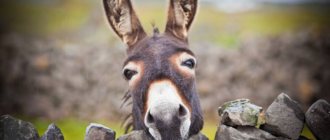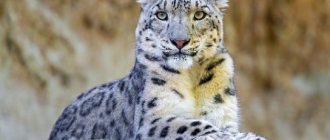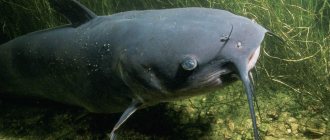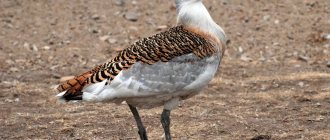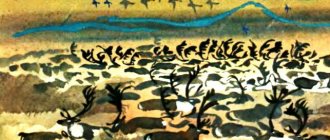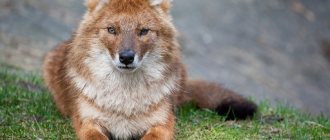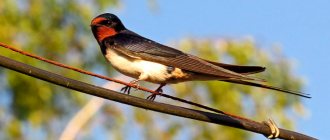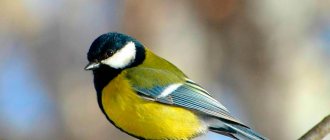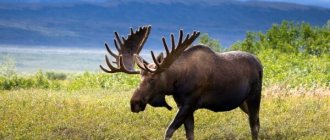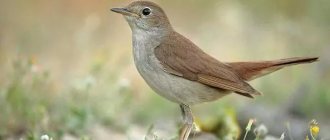This is a typical representative of the bustard family living in the steppe. This name was given because the birds can run quickly if danger arises. The bustard is a rather massive bird: it weighs about 16 kg and has a long body that can reach 100 centimeters. The wingspan of the bird is also surprising, as it is approximately 200 centimeters.
What does a bustard look like?
The appearance of the birds is quite ordinary. Their wide body and large chest are supported by three-toed legs, covered with scales and adapted for long walking. The short neck is supported by a small head. The forehead area smoothly transitions into a massive beak. Birds have bright plumage of red or black with light splashes. Almost all parts of their body are painted the same color. Sometimes there are brown specks on the feathers. There are white feather feathers next to the beak - this is a unique feature of birds.
Sexual dimorphism is expressed in the size and color of plumage. So, the male is much larger and more elegant than the female. In males, the body has a circumference of one meter. They weigh from 7 to 16 kilograms and have a long body. In turn, the maximum weight of a female is 8 kg.
Characteristic
The bustard is a fairly large bird, about twice the size of a black grouse . Males are larger than females in weight and size.
Among the external differences, it is worth noting the pale gray antennae, which rise upward during the mating dance. The popular names for this representative of the bustard family are dudak and spoonbill.
The diet includes both vegetation - grasses, cultivated plants, and animal food - insects, such as grasshoppers and cicadas , rodents such as steppe mice and lemmings.
The photo of the male shows pale gray antennae
Important! Sometimes bustards are divided into two subspecies. However, differences in plumage are noticeable only in aging males.
Flight style
The bustard is capable of running quickly, but more often it moves slowly and imposingly. This is one of the heaviest flying birds. To rise into the air, individuals have to run away.
They gain altitude gradually and make powerful, rare flapping movements of their wings in flight. Despite its apparent slowness, the bird reaches speeds of up to 50 km/h. It doesn’t gain much altitude, it flies closer to the ground.
When birds migrate
Birds make their spring migration at the very beginning of warming and the appearance of thawed patches. They fly, forming pairs or small flocks of up to 5 individuals. Birds rarely return from wintering alone.
Birds go to winter at the turn of August-September. The duration of the flight depends on the habitat. In the southern regions, the birds' stay at the wintering site may end only by September.
Kinds
There are two types of bustards - European and East Siberian. Today, the population of both is under threat due to the fact that predators eat the birds' eggs, and humans destroy them due to the development of territories. Their main difference is their habitat, although plumage also plays an important role.
The European bustard has a dark color, combining brown and black. Its habitat is the Rostov region and the Lower Volga region. Sometimes individuals of this species can be found in Iran.
The East Siberian Bustard has black stripes on the back and whitish tufts on the head in males, which grow in the summer. Representatives of the species can be found in various republics of the Russian Federation: Buryatia, Tyva.
Habitat
The bustard is primarily a steppe bird. It lives on open plains without copses, meadows and fields. This is explained by the caution of the birds, since the free space there is visible far away.
During nesting, individuals stop in areas with high vegetation. There are also cases when bustards nest among crops of grain, sunflowers and other crops.
The bustard's habitat extends across North Africa and Eurasia, covering steppe regions from the Pyrenees to Mongolia.
Birds go to Turkmenistan, Tajikistan, and Northern Iran to spend the winter.
Nutrition
Birds eat a very varied diet. They can eat insects, grains and beetle eggs. The last option is relevant in the spring. Before dawn, birds hunt mice and other rodents or lizards. Sometimes they eat relatives who have been wounded.
In winter, the diet consists of plants related to legumes and cabbage. These can be various shoots, buds or fruits. In some cases, the bustard eats the roots of wild onions and wheatgrass. Due to the nature of their gastrointestinal tract, birds cannot eat coarse fibers.
After your hunger is satisfied, you need to drink a lot of water. Bustards pay a lot of attention to its quality. They need cool and fresh liquid without any impurities.
ENEMIES
The bustard's biggest enemy is humans, as well as several representatives of the animal world, including the fox, steppe eagle, and golden eagle. These predators hunt mainly young birds, but sometimes they are able to defeat an adult bustard. Crows also devastate bustard nests. In Central Europe, 60-90% of the livestock is regularly destroyed during the cultivation of fields and meadows. High mortality among newborn chicks is caused by a cool and humid climate. Chicks become easy prey for predators. Adult bustards often die when they hit high voltage wires while flying. All this led to the fact that the bustard bird is listed in the Red Book.
Lifestyle
They lead a terrestrial lifestyle, although they can fly. They walk slowly and measuredly. To take off, the animal must run and take off with one jump. Gaining altitude, birds occasionally but powerfully flap their wings and gain speed over time. They collect food from the surface of the earth and do not like to dig it up from there. Food is caught using a massive beak, one blow of which kills the prey. To help digest food better, they eat stones that grind the food.
Bustards are more active during the day, and in the evening they prefer to collect food.
By nature, they live alone. It is unusual for them to gather in flocks, although during the migration period this is possible. However, colonies contain birds of the same sex. Usually bustards return back in the same way, but they do this only during the day.
They are sedentary birds. Sometimes in the north you can see birds flying to other regions for the winter. These are birds that easily adapt to environmental conditions. But their body is not adapted to rain or cold climates, since there is no sebaceous secretion. For this reason, bustards cannot fly in cold weather. But this is not the only problem. The difficulty is that it is difficult to extract food from under the snow, and there is very little game at this time of year.
Weight is not a hindrance to movement
Even the presence of excess weight does not prevent this bird from moving quickly and taking off. Looking at this process, we can draw an analogy with an airplane. The bustard begins to accelerate and runs for a long time, then spreads its wings and gradually gains height. The bird can cover long distances, but does not fly too high .
Reproduction and population
In females, maturity occurs already at 3 years, while in males it is approximately 5. During the mating period, males have their own territory, where they do not allow others to enter and where they try to conquer the female. Typically, male specimens display their hindquarters while hugging the ground. At this time, they breathe frequently, and their head seems to be drawn into their neck. This technique is repeated every 5 minutes. Bustards are not monogamous, so they mate with several partners at once.
The nest is built in May. This is a hole located in a place that is heavily overgrown with grass. Only the female is engaged in creating and arranging the “home”. With the help of its beak, the bird rids the area of weeds, and then gives the dwelling a round shape, with fluff spread on the bottom.
Laying eggs
The female lays 2 to 4 eggs in a pit-shaped nest. They can be olive, green or speckled in color. To equip its nest with maximum comfort for babies, the bustard first digs up the ground and uses its beak to remove all possible unevenness. By moving her body, she gives the hole a round shape, after which she lays down dry grass and incubates the eggs.
Chicks
Usually the female lays a clutch of 2 eggs, which reach 7 centimeters in length. The shell is greenish in color with spots of dark colors. It takes approximately 3 weeks to incubate the chicks, which is done by the female. At this time, the male leaves for the molting site.
The bustard hatches its chicks, practically without moving, so as not to put predators on the trail. As soon as danger approaches, she begins to pretend to be wounded and tries to run away from the nest as far as possible. The female still leaves the offspring, but only in order to get food.
Literally from birth, the young animals explore the area. After 7 days, the mother takes the chicks to the steppe so that it learns to hunt. Once the birds are 40 days old, they begin to fly on their own.
Steppe bustard interesting facts. Bustard bird: decoration and pride of the steppes
Bustard bird
Amazing birds live in the steppes. These are bustards. Among them there are very large ones, almost the size of a turkey. Bustards walk and run a lot across the steppe, so their legs are strong and strong.
Vigilant birds are very careful and notice danger from afar. They flee from persecution. If this does not help, they take to the air. Bustards take off with a running start, heavily flapping their large wings.
Having gained altitude, they fly easily and quickly.
The bustard makes its nest on the ground. It is a small hole with a litter of dry stems. The bird lays two or three large eggs, which it then warms for almost a month. It is impossible to see a bustard sitting on a nest. Variegated feathers camouflage a large bird, turning it invisible.
Bustards feed in the morning and evening hours. They nibble young grass, collect seeds and grains. They readily catch grasshoppers and lizards. During the day, the birds hide in dense weeds.
Late autumn is the most dangerous time for steppe birds. Bustards do not lubricate their plumage with fat and when it rains, their feathers get wet. If a sharp cold snap follows, they become covered with ice and freeze together. Birds cannot fly and become easy prey for large eagles, foxes and wolves.
How did Niagara Falls come about?
Niagara Falls is located on the Niagara River 25 km northwest of the city of Buffalo, …
Do you know what is the largest organ of the human body? This is our skin, which...
Which country is the smallest in the world?
When we say the word “country,” we usually mean an independent state with a certain territory and its own government.


